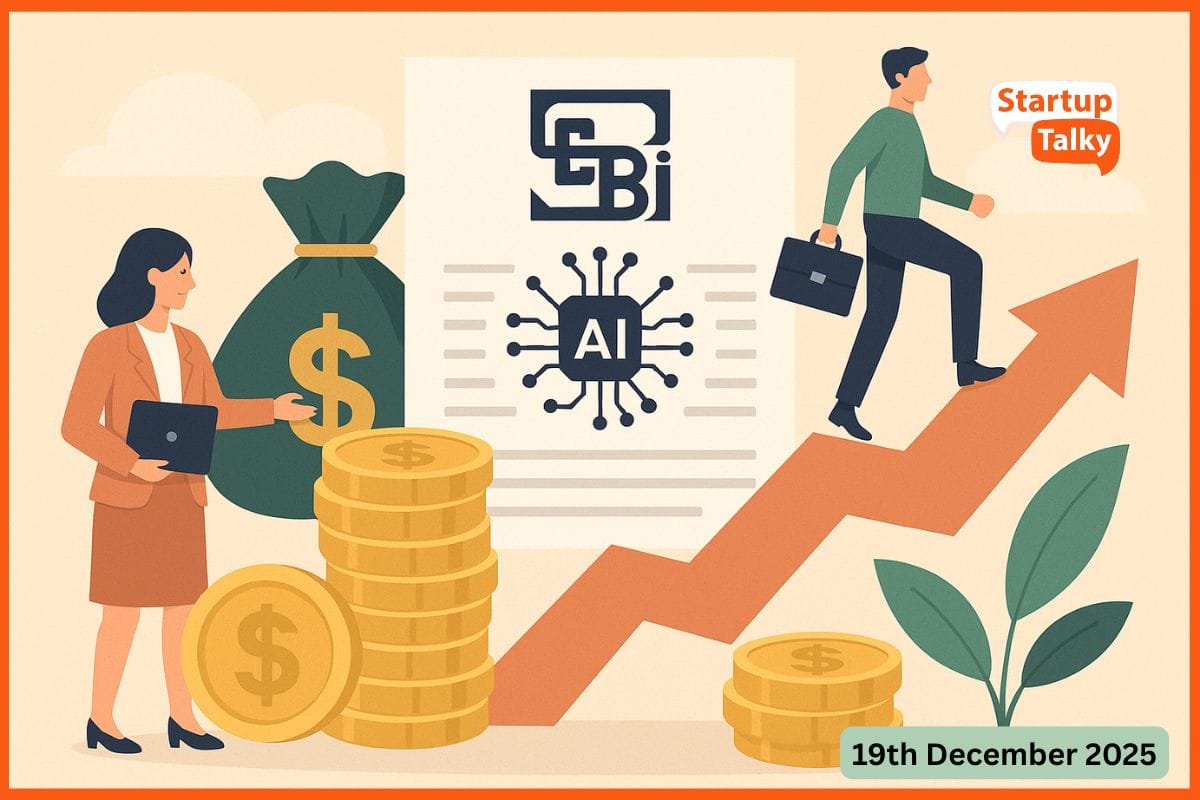Complete Guide on Intellectual Property, Patents, and How Is It Beneficial for Your Business?
🔍Insights
Intellectual property (IP) is a term that is often heard, but what does it mean? IP refers to creations of the mind, such as inventions, literary and artistic works, and symbols, names, and images used in business. It is protected in law by patents, copyright, and trademarks, which enable people to earn recognition or financial benefit from what they invent or create.
Different types of intellectual property exist for the protection of individual business secrets. Understanding the legalities and regulations around copyrights, trademarks, and patents is essential for people who want to protect their intellectual property rights.
Article 27 of the Universal Declaration of Human Rights, talks about the protection of ethical and material interests resulting from any scientific, literary or artistic production of any creator or author.
Patents grant creators an exclusive right to stop others from commercially exploiting their inventions without permission. Copyright protects original works of authorship including literary, dramatic, musical, and artistic works such as songs, books, paintings, and photographs. Trademarks protect distinctive marks, logos, or symbols that identify a product or service and distinguish it from others.
History of Intellectual Property
Importance of Intellectual Properties for Businesses
Types of Intellectual Properties:
How to Decide Whether Your Business Needs a Trademark, Copyright, or Patent?
Trademark, Copyright, or Patent Requires an Attorney?
Costs Involved in the Application of Intellectual Property Protection
Consequences of Violation of Intellectual Property Rights

History of Intellectual Property

The legal development of copyrights, trademarks, and patents has been a key part of the development of society. In 1624, England passed the first copyright law to protect authors from having their works copied without permission or compensation.
In the 18th and 19th centuries, copyrights were expanded to cover more works such as software, maps, motion pictures, and even compilations of facts. The concept of protecting trademarks and logos was developed in the late 1800s with the creation of the Paris Convention for Protection of Industrial Property (1883) and the Berne Convention for the Protection of Literary and Artistic Works (1886) which was later followed by the Madrid Agreement for Repression (1891).
Since then, countries around the world have continued to develop their laws and regulations to protect intellectual property rights based on the above laws. IP promotes ease of doing business and allows smooth transfer of technology.
World Intellectual Property Organization (WIPO) is responsible for IPR protection and its sole authority for IP Rights. The above treaties were also facilitated by WIPO.
Importance of Intellectual Properties for Businesses
The IP system seeks to create an environment where innovation and creativity can flourish by finding the correct balance between innovators' interests and the larger public interest.
Businesses need to understand how IP protection works and take steps to protect their creations. Through copyrights, trademarks, and patents, businesses can enjoy the monetary benefits of their innovations while also safeguarding them from misuse and exploitation.
Ultimately, this encourages further investment in creativity, allowing more people to benefit from originality and innovation. IPR is responsible for well being of human growth and its capacity to create and innovate new things for humanity.
Types of Intellectual Properties:
Copyrights
Copyrights are a form of protection provided to the authors or creators of original works. This includes literary, dramatic, musical, and artistic works such as books, movies, music, photographs, and software. The copyright owner has exclusive rights regarding the reproduction and distribution of their work.
Table of copyright duration by country (Source: Wikipedia)
| Countries | Copyright terms based on author's deaths | Copyright terms based on publications and creation dates |
|---|---|---|
| Australia | Life + 70 years Life + 50 years (death before 1955) | 70 years from publication (sound recordings, cinematograph films) and 50 years after making (television broadcasts and sound) |
| Canada | Life + 70 years (except certain posthumous works) Life + 50 years (death before 1972) | 75 years from publication or 100 years from creation, whichever is shorter (anonymous works) |
| Denmark | Life + 70 years | - |
| European Union | Life + 70 years | Anonymous or pseudonymous works only: "70 years after the work is lawfully made available to the public" (Art.1(3)). Protection ends if the work is not made available within 70 years from creation. (Art.1(6)) |
| Finland | Life + 50 years | 50 years from publication and creation (sound recordings, television broadcasts, sound broadcasts, and photographic works) |
| France | Life + 70 years (except posthumous works published after this term)* | 70 years from publication (pseudonymous, anonymous or collective works) |
| Germany | Life + 70 years | 25 years from first publication or first public performance if copyright has expired before such publication or performance, or if the work has never been protected in Germany and the author died more than 70 years before the first publication |
| Hong Kong | Life + 50 years (literary, dramatic, musical or artistic works with known authorship) Life + 50 years (Films) | 50 years from publication or if unpublished 50 years from creation (literary, dramatic, musical or artistic works with unknown authorship) |
| India | Life + 60 years (except posthumous works) | 60 years from publication (posthumous works, photographs, cinematograph films, sound recordings, works of public undertakings, and works of international organizations) |
| Iran | Life + 50 years | 30 years from publication (photographic or cinematographic works) |
| Israel | Life + 70 years | 50 years from publication (photographs created until May 2007) |
| Italy | Life + 70 years | 70 years from publication (anonymous or pseudonymous work) |
| Japan | Life + 70 years | 70 years from publication, or if unpublished, 70 years from creation (cinematographic works) |
| South Korea | Life + 70 years (amended on 2011-06-30) | 70 years from publication |
| Netherlands | Life + 70 years | 70 years from publication (anonymous or pseudonymous work, corporate works with no listed natural author)[ |
| New Zealand | Life + 50 years (literary, dramatic, musical, or artistic work) | 50 years from creation (computer-generated work) |
| Pakistan | Life + 50 years | - |
| Russia | Life + 70 years Life + 74 years (for those who fought 1941-45) | 50 years from creation and 70 years from publication (anonymous works |
| Taiwan (Republic of China) | Life + 50 years (except posthumous works first published 40 to 50 years after death) | 50 years from publication (anonymous or pseudonymous work) |
| Turkey | Life + 70 years | 70 years from publication for work-for-hire |
| United Arab Emirates (UAE) | Life + 50 years | - |
| United Kingdom | Life + 70 years If multiple authors are involved the + 70 years after last author's survival | 70 years if the author is unknown or unknown |
| United States | Life + 70 years (works published since 1978 or unpublished works) | 95 years from publication or 120 years from creation whichever is shorter (anonymous works, pseudonymous works, or works made for hire, published since 1978) |
Patents

Patents protect inventions, from a new type of machine to an innovative product or process. The patent owner has exclusive rights to exploit the invention commercially and prevent others from using it without their permission. There are two types of patents utility patents and design patents.
Trademarks

Trademarks are signs used to distinguish the goods or services of one company from those of another. This can include words, phrases, logos, designs, and symbols. Trademark owners have the exclusive right to use their trademark and prevent others from exploiting it without their permission.
Trade secrets
Trade secrets are confidential information related to a business that has commercial value. This can include recipes, customer lists, pricing strategies, or manufacturing processes. Such information is protected from unauthorized use or disclosure and its owners have exclusive rights over the exploitation of the secret.
How to Decide Whether Your Business Needs a Trademark, Copyright, or Patent?
| IP Right applications | 2019 | 2020 | Growth (%), 2019-2020 |
|---|---|---|---|
| Patents | 3,226,100 | 3,276,700 | 1.6 |
| Trademarks * | 15,130,000 | 17,198,300 | 13.7 |
| Industrial designs * | 1,361,000 | 1,387,800 | 2.0 |
| Plant variety | 21,430 | 22,520 | 5.1 |
Copyright and trademarks are typically available to protect creative works such as literary, artistic, or musical works. Patents can offer protection for inventions, products, processes, and methods of use.
When creating a business plan, it is important to consider the various aspects of IP. This plan should consider what kind of IP might be appropriate for your business, the length of protection offered, the costs associated with protecting your IP, and how to ensure that your IP is adequately protected. By understanding the different forms of IP and their associated benefits, you can make informed decisions about which form of protection is most suitable for your business. This can help you to maximize the potential value of your products.
It can be difficult to know how to apply intellectual property protections in a given context. Between trademark and copyright, there may be some overlap. Additionally, some odd works initially appear to defy classification.
The following recommendations can help you defend some particular works and categories:
- Names, phrases, and symbols associated with a brand or company can be trademarked.
- Inventions are eligible for patent protection.
- Novels and other books are generally copyrightable, though copyrights may have limitations depending on the jurisdiction.
- Computer programs can be patented, but copyrights also apply to code in certain contexts.
- The same IP protections that apply to works of art may also apply to graphic design. Like all creative written works, blogs get certain copyright rights the moment they are created, but to enforce those protections, you must register your blog entry.
- Producing original music gives you copyright protections, but without registering it with the Copyright Office, you can't use the federal court to assert your ownership rights.
Trademark, Copyright, or Patent Requires an Attorney?
Although it’s possible to apply for copyrights, trademarks, and patents without an attorney, it isn’t easy. An experienced attorney can help protect your work by ensuring that your registration is properly prepared and filed, and the process goes through without any issues.
A lawyer who understands the IP law landscape can also provide invaluable advice on the best way to protect your work. Patent lawyers, for example, can advise a business on how to structure its portfolio of copyrights or trademarks to gain the most protection from existing laws and regulations. Ultimately, an attorney can help ensure that your IP is protected and maximize its long-term value.
It is generally recommended that copyrights be registered with the United States Copyright Office. This registration grants creators an exclusive set of rights and protections, including the right to reproduce the work, distribute copies of it, perform the work publicly, display it in public, and make derivative works based on it.
Trademarks come in two forms: common law and federal registration. Common law trademarks can be acquired without any filing or paperwork; however, registering a trademark with the United States Patent and Trademark Office gives you several benefits that are not available through common law protection.
Patent attorneys are trained to understand the complex legal and technical aspects of patent law. They can help you make sure that your invention is eligible for a patent, advise you on how to protect your IP rights, file the appropriate paperwork with the United States Patent and Trademark Office, and represent you in court should any disputes arise.
Costs Involved in the Application of Intellectual Property Protection
Depending on the type of IP protection you need, the costs can range anywhere from a few hundred to thousands of dollars. Copyrights and trademarks are relatively inexpensive compared to patents, which can cost between $2,000 and $15,000 depending on the complexity of the invention. Hiring a patent attorney will add to the overall cost of protecting your intellectual property.
By taking the proper steps to protect your intellectual property, you can ensure that no one else will benefit from what you have created without your consent. This includes safeguarding against unauthorized use or infringement. The costs associated with IP protection are a worthy investment for any innovator or creator.
Consequences of Violation of Intellectual Property Rights
Violation of Intellectual Property Rights is a serious offense. Copyright violations can lead to legal action and substantial fines, while patent infringements can lead to even more severe repercussions such as financial compensation or injunctions against the offender. Therefore, it is important to understand the laws associated with copyrights, trademarks, and patents to ensure that you are compliant with them and avoid any potential consequences.
FAQs
What Are WIPO Patents?
These are exclusive rights given for the protection of an invention, which is new and has a procedure or invention that solves any problem.
What Is Trade Secrets Example?
Trade secrets cover manifold, information including:
- Commercially valuable things like tech information or manufacturing-related information.
- Combination of elements like Lab test data, design, and drawing, etc.
Do Intellectual Property Laws Protect Trade Secrets?
No, contrary to Patents, Trade secrets are protected without registration.
How Many Types of Trade Secrets Are There?
There are five types of trade secrets:
- Processes
- Formulas
- Databases
- Programs
- Business Operations
Must have tools for startups - Recommended by StartupTalky
- Convert Visitors into Leads- SeizeLead
- Website Builder SquareSpace
- Manage your business Smoothly Google Business Suite







